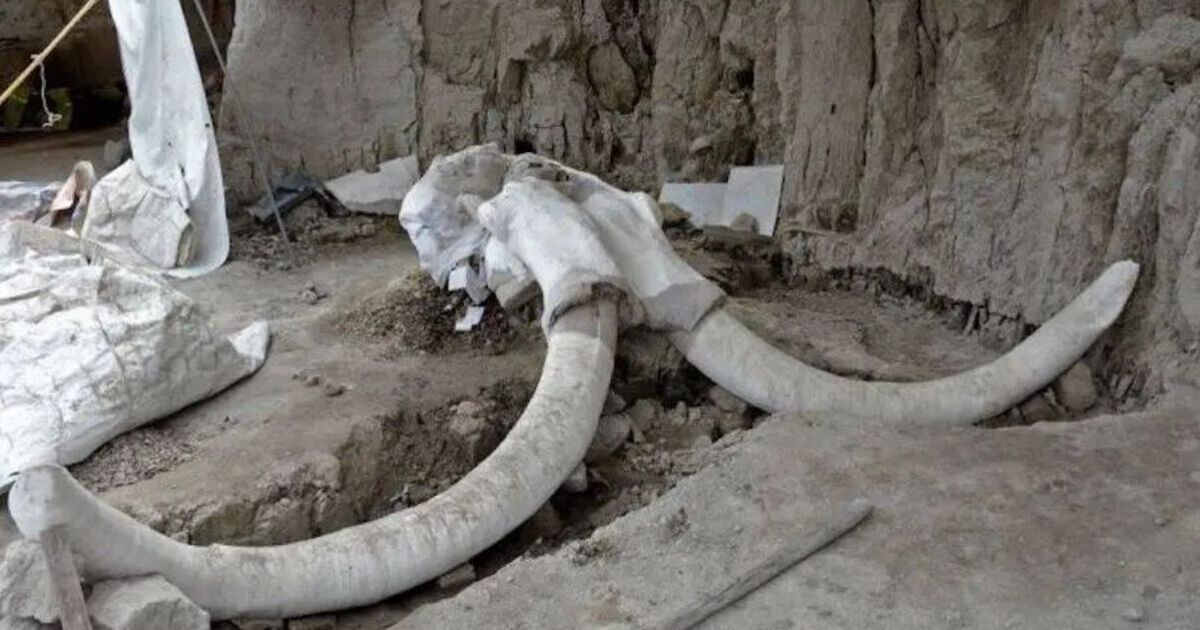A baffling ‘Palace of Bones’ constructed from 40,000 year old mammoth remains has been discovered around 300 miles south of Moscow.
This latest find, known as Kostenki 11, is the oldest and largest “mammoth house” ever unearthed at a Russian archaeological site – believed to have been made from over 60 mammoths.
Smaller relics were found in the 1960s and 70s at the same site, but none of this incredible size.
The structure, which measures approximately 30ft by 30ft, is composed of Ice Age mammoth bones, according to the Antiquity journal.
Although the remains were initially excavated a few years ago, recent studies show that the mammoth bones date back an astonishing 40,000 years.
Charred wood remains were also found, suggesting that Ice Age humans had wood fires burning within the mammoth palace. The walls of the structure were reportedly built from a staggering 51 mammoth jawbones and 64 mammoth skulls.
These remains are believed to have remained hidden for so long due to sediment accumulation over the years, leaving them one foot below surface level.
Dr Alexander Pryor, the lead archaeologist on the study from the University of Exeter, said: “Kostenki 11 represents a rare example of Palaeolithic hunter-gatherers living on in this harsh environment.”
“What might have brought ancient hunter gatherers to this site?”
“One possibility is that the mammoths and humans could have come to the area on masse because it had a natural spring that would have provided unfrozen liquid water throughout the winter – rare in this period of extreme cold.”
This intriguing theory emerges as archaeologists unearthed at least 14 Woolly Mammoth skeletons in colossal man-made pits near Mexico City.
Experts believe these ancient bones suggest that prehistoric humans actively hunted the giant creatures using fire and wooden tools.
It’s thought that the hunters who crafted these pits used such implements to corral the mammoths into the traps each measuring 5ft 6in deep and 82ft across.





